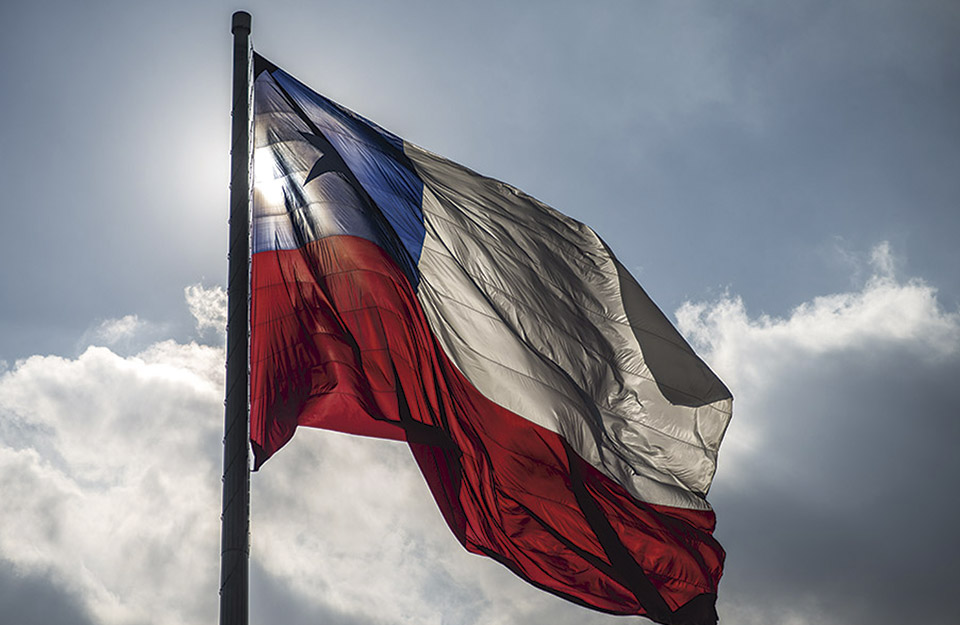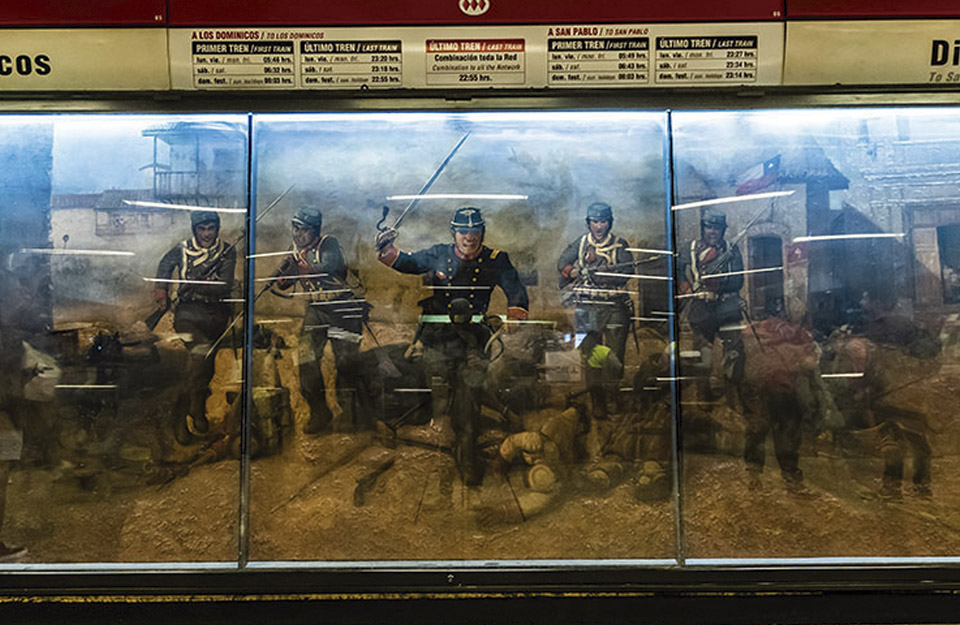
Every July 9, Chile commemorates the national day of the flag, a symbol that has had different versions in the 200 years of history of our country, and that today generates great pride among Chileans.
Almost 205 years ago our flag was officially adopted by the Republic, being an emblem that accompanies us not only during the national holidays in September, but in any official activity. From Imagen de Chile we invite you to learn some facts about its origin, from the traditions, its different versions, the history behind the day and the feeling that this symbol generates in Chileans.
The Lone Star

Composed of two stripes: a red lower stripe and an upper stripe divided into 2/3 white and 1/3 turquoise blue with a white 5-pointed star, our national flag, better known as "The Lone Star", was officially adopted on October 18, 1817.
Commissioned during the administration of Bernardo O'Higgins to the then Minister of War José Ignacio Zenteno, it was used publicly for the first time during the proclamation of independence on February 12, 1818.
Regarding its meaning, it has traditionally been associated with the white of the mountain range, the blue of the sea, the red of the blood shed by the martyrs of independence, and a solitary star, representative of the unique and indivisible State that is Chile.
Similarly, other versions suggest that the flag could be inspired by the one used by Mapuche warriors during the Spanish conquest, as described in the epic poem "La Araucana", written by the poet and soldier Alonso de Ercilla in the sixteenth century. In canto XXI of the poem, it can be read how, when describing the march of Mapuche troops, he refers to the waving of a flag held by the warrior Talcahuano "...covered with tall feathers, very lush, followed by his fighting people, with blue, white and red bands across their chests ".
Before the current flag was declared as the official flag, there were other versions, the first being that of the Old Fatherland (1812 to 1814), with a blue upper stripe; a white central stripe; and a yellow lower stripe, followed by the flag of the Transition (1817), which replaced the lower stripe with a red one.
The Battle of La Concepción

Between July 9 and 10, 1882, the battle of La Concepción took place, a combat towards the end of the War of the Pacific where 80 Chileans lost their lives at the hands of the Peruvian army.
The Chilean contingent under the command of Captain Ignacio Carrera Pinto, grandson of José Miguel Carrera, was the first line of Chilean forces in the Peruvian Sierra, and were quartered in a small town called La Concepción.
During the afternoon of July 9, the garrison of 77 soldiers and 2 barmaids (one of them pregnant), was surprised by 300 soldiers of the Peruvian army and more than 1500 guerrillas, and prevented from retreating, they barracked and established defensive positions in the local church, awaiting reinforcements.
During the morning of July 10, the last 5 soldiers who remained standing made a last charge, an event that was immortalized by the national artist Manuel Espinosa Salas, and that today can be seen in the Los Héroes station of the Santiago subway.
Since 1939, the different branches of the armed forces have been performing the Pledge of Allegiance on that day, and since 1974, the date was officially designated as National Flag Day, a way of honoring the Chilean men and women who gave their lives in the line of duty.
Chilean Pride Study

In the more than 200 years of Chile's history as an independent country, several institutions, territorial divisions or representative instruments of the State have undergone modifications. Despite this, the flag and emblems of the republic have remained practically unchanged, which begs the question, what does this symbol represent for Chileans?
According to the most recent Chilean Image Pride Study, Chileans show a high level of pride in their national emblems: 91% would not change the Chilean flag, 87% would not modify the national anthem and 83% would keep the national coat of arms.
The same study indicates that 54% of those surveyed feel proud to be Chilean, and with respect to the feeling for Chile, only 19% said they felt not very proud.






